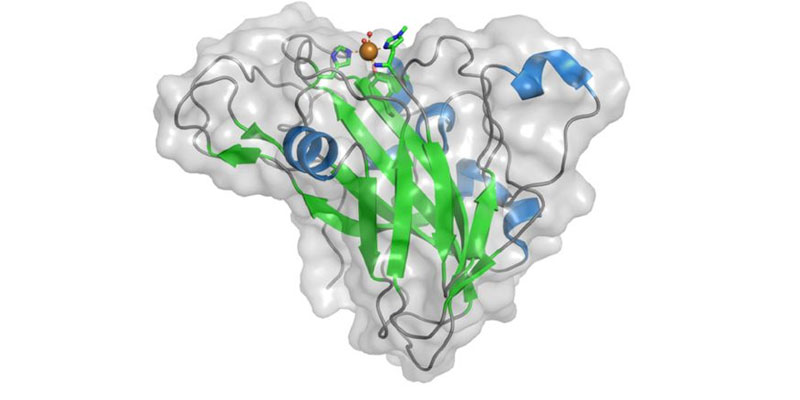
Biological Inorganic Chemistry
Our research focuses on the functions and applications of metal ions in biological systems.
Our main areas of interest include:
- Metalloprotein structure, function and mode-of-action, especially of biomass-degrading enzymes, such as lytic polysaccharide monooxygenases and hydrogenases
- Siderophore-binding proteins
- Artificial metalloenzymes.
New antimicrobials are a target of research into siderophore-conjugates, CO-releasing molecules and redox-active bacterial enzymes.
We use a wide range of techniques to interrogate proteins, particularly structural methods such as magnetic spectroscopy, electrochemistry and small molecule models. On a whole organism scale, we use diagnostically-resolved magnetic resonance imaging to monitor in situ drug metabolism via hyperpolarisation methods that utilise molecular catalysts. These techniques are augmented with DFT computational theory, genomic discovery, chemical and molecular biology.
We have strong links with York Structural Biology Laboratory, which uses and develops methods to determine, analyse and exploit the structure of proteins and their complexes with other molecules.
Staff
Related links
| Name | Expertise |
|---|---|
| Gideon Davies |
|
| Simon Duckett |
|
| Anne Duhme-Klair |
|
| Ian Fairlamb |
|
| Jason Lynam |
|
| Alison Parkin |
|
| Paul Walton |
|